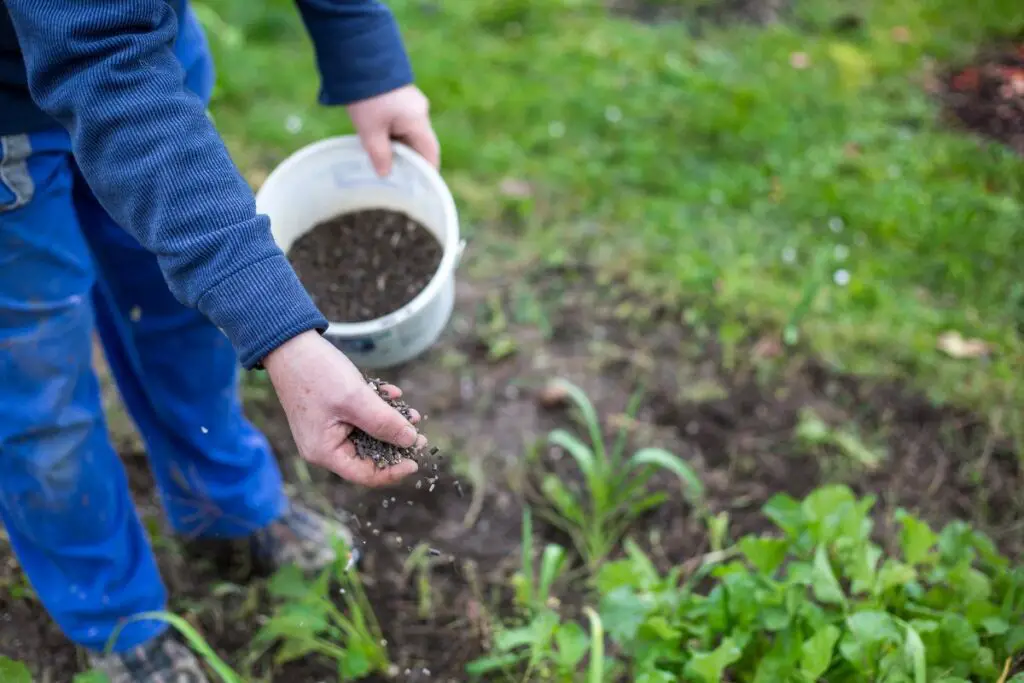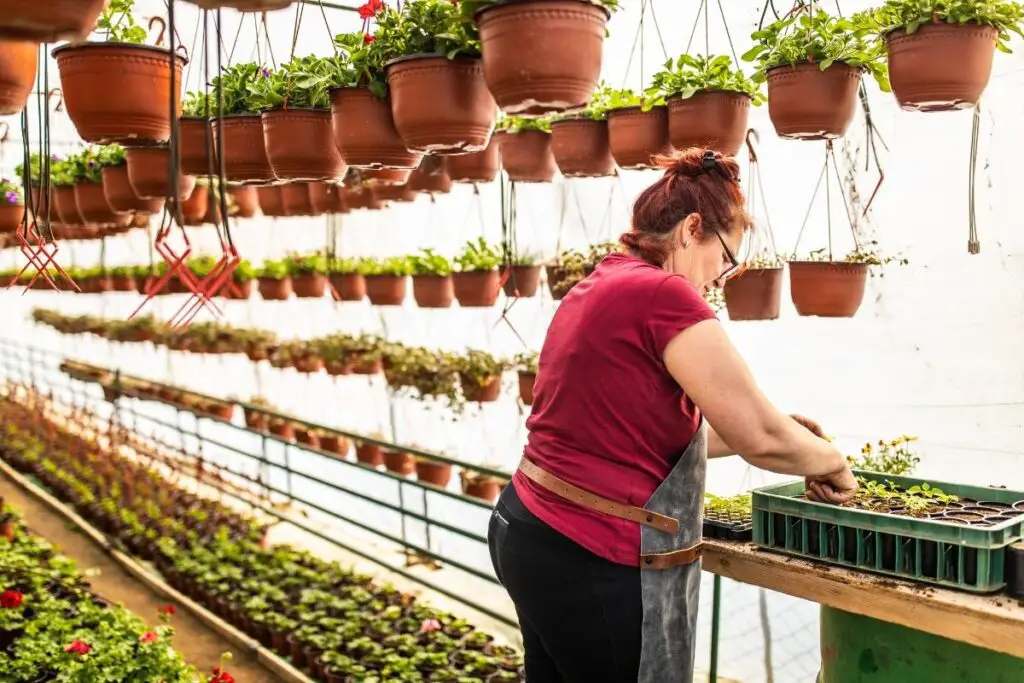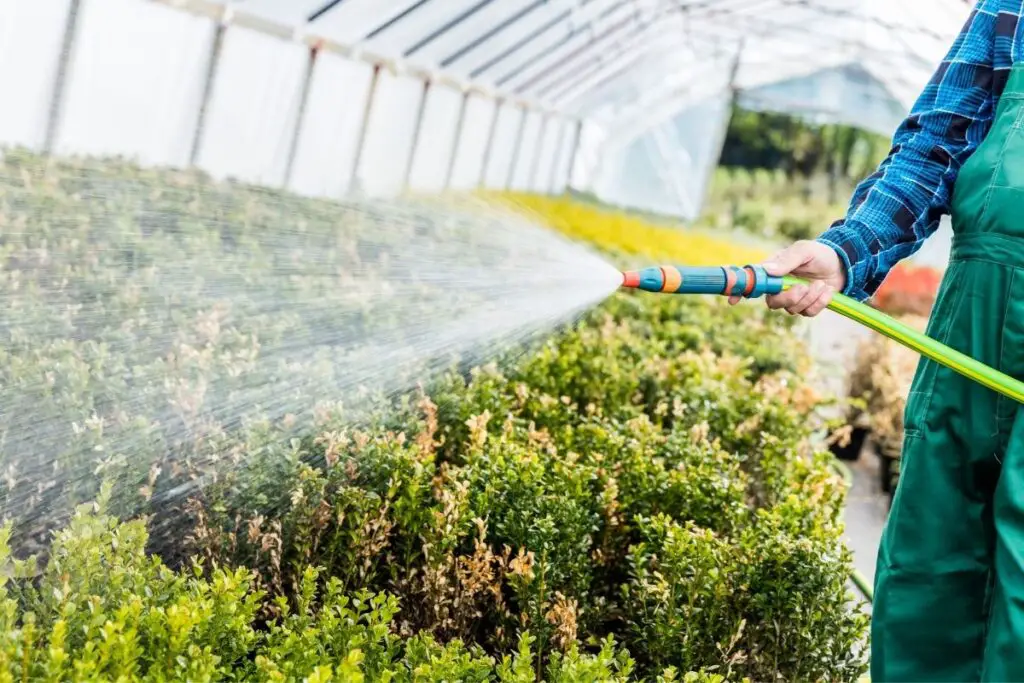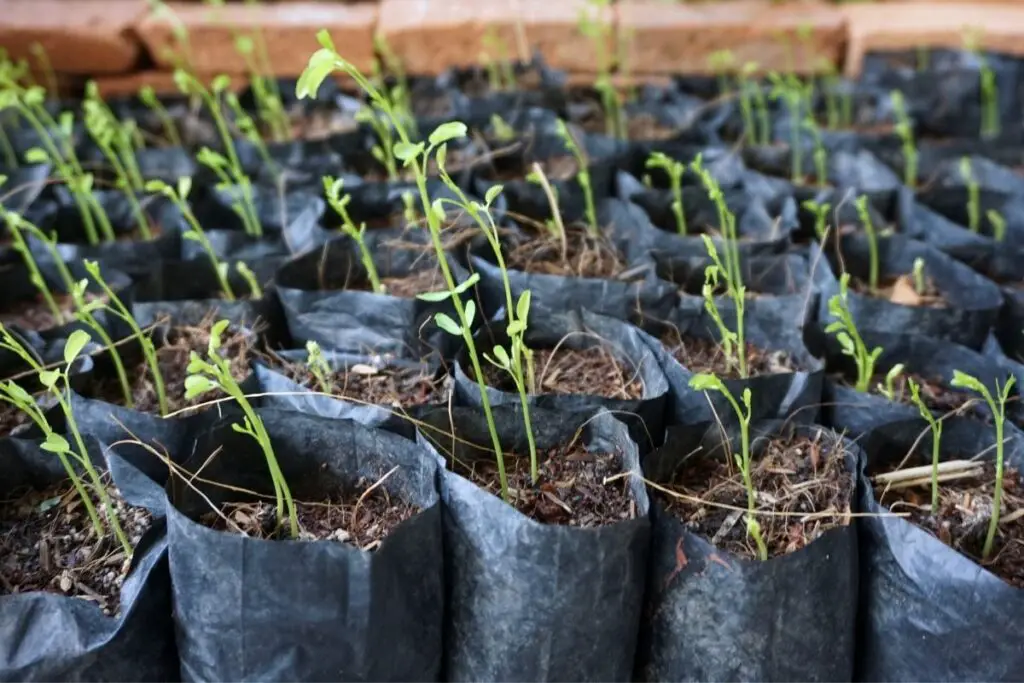When we grow flowering plants, we want them filled with blooms throughout the year. However, that doesn’t happen either due to season or other issues. But, how do nurseries manage to keep their plants flowering the whole year? Let’s find out.
The nurseries can keep their plants blooming by providing them with the appropriate environment and eliminating any possible problem that prevents flowering. The plants receive bright sunlight, adequate watering, fertilization, temperature, and humidity, ensuring better blooms.
Besides these, the nursery plants stay under regular care and maintenance. In this article, I have shared how nurseries care for their plants to keep them flowering. So, keep reading.

How do the nurseries keep their plants flowering?
The nursery plants stay under special care and maintenance, for which the plants keep flowering most of the time.
The job is not extremely tough, but since the nurseries have many experienced workers to look after the plants, they always give the plants their basic requirements in time.
That is why the plants in the nurseries keep flowering and flourishing throughout the year.
Also read: How Do Nurseries Grow Plants So Fast?
Let’s see what keeps them blooming:
The nursery plants receive enough sunlight.
Most flowering plants require a lot of sunlight for growth and flowering.
The nurseries keep the plants under the full sun or filtered sun as per the plants’ needs.
The plants are also given perfect shade when the sunlight is too harsh.
Most flowering plants need 6-8 hours of sunlight for flowering, along with some hours of darkness.
A proper balance between light and darkness allows them to bloom most of the year.
The nurseries observe the plants’ progress level daily and expose them to light as required.
If you grow a flowering plant indoors, it might not receive the right amount of light it needs for flowering.
If you grow them outside, they might receive too much light, resulting in sunburn.
Even if you try to adjust the light, you won’t be able to create the exact setting as the nurseries.
In the nurseries, everything is controlled by the horticulturalists.
They give the plants the perfect amount of light.
Sometimes, artificial lights are also used if the sunlight is not enough.
Nurseries fertilize the plants well.

The nurseries always fertilize the plants whenever they need it.
A well-nourished plant will remain healthy and happily produce bigger and better flowers.
Nurseries give the plants adequate nutrients in many ways, from slow-release for infrequent application to liquid fertilizers for foliar spraying with every watering.
The nurseries also use organic fertilizers to keep the plants healthy.
A nourishing plant will always bloom better than those who are not well-fed.
Along with these general NPK fertilizers, the nurseries also use bloom boosters to make the plant bloom.
A bloom booster fertilizer contains high amounts of phosphorus, which encourages the flowering plants to bloom vigorously during the season.
The nurseries also use DAP fertilizers.
DAP fertilizers are the type of fertilizers that contain high amounts of nitrogen and phosphorus.
DAP helps in the plants’ both growth and flowering.
It increases the leaf and plant growth and supports more and bigger blooms.
These NPK and DAP fertilizers are provided in diluted form to the young plants when they are ready to grow and develop vigorously.
These fertilizers are applied under special guidance and experience in the nurseries.
That is why the result is the continuous production of big flowers.
Also read: How Often Do Nurseries Fertilize Plants?
Looking for gardening supplies? We have tested 100's of products before recommending them to you guys. Check out our best pick below:
| Image | Gardening Supplies | Best Price? |
|---|---|---|
 Top
Top Top
Top | Raised Garden Bed Kit | Check On Amazon |
 | XLUX Soil Moisture Meter, Plant Water Monitor, Soil Hygrometer Sensor for Gardening, Farming, Indoor and Outdoor Plants, No Batteries Required | No Results |
 Top
Top Top
Top | 82 Pcs Garden Tools Set and Extra Succulent Tools Set | Check On Amazon |
 | Joeys Garden Expandable Garden Hose with 8 Function Hose Nozzle, Lightweight Anti-Kink Flexible Garden Hoses, Extra Strength Fabric with Double Latex Core, (50 FT, Black) | No Results |
 Top
Top Top
Top | Dual Chamber Compost Tumbler | Check On Amazon |
 Top
Top Top
Top | Sunnyglade Plant Stakes | Check On Amazon |
 Top
Top Top
Top | Organic Cold Pressed Neem Seed Oil | Check On Amazon |
 Top
Top Top
Top | Mighty Mint Gallon :-Insect and Pest Control Peppermint Oil | Check On Amazon |
 Top
Top Top
Top | Scotts DiseaseEx Lawn Fungicide | Check On Amazon |
 Top
Top Top
Top | Jacks Classic 20-20-20 All Purpose Fertilizer | Check On Amazon |
 Top
Top Top
Top | 30,000 Seeds Pollinator Attracting Wildflower Mixture | Check On Amazon |
 Top
Top Top
Top | Survival Vegetable Seeds Garden Kit-Over 16,000 Seeds | Check On Amazon |
The plants grow at a controlled temperature and humidity.
The temperature and humidity at the nurseries are always kept ideal for the plants.
A perfect temperature and humidity allow the plants to grow vigorously without any problems.
When the plants don’t face any issues related to temperature and humidity, they will be healthy, and such a plant will never fail to flower.
Along with the controlled environment maintained by the nurseries, the plants also play a great role in creating an ideal atmosphere where they stay and flower profusely.
Nurseries use good soil.

Soil highly affects the plants’ overall growth and development.
If the soil is not of good quality, the plant will fail to flower and not grow at its full potential.
The nurseries grow their plants in sterile and nutritious soil, thus making the plants healthy and well-nourished.
A well-nourished plant will make the plant flourish and encourage them to bloom abundantly during the blooming season.
Along with being sterile and nutrient-rich, the nurseries use red soil for flowering plants.
Red soil is loamy and great in drainage and aeration, which supports good root growth and healthy plants, that will never fail to bloom.
Regular deadheading encourages more flowers.
Removing the spent flowers from the plant stops the plant from forming seeds.
It turns the plant’s focus on growing new leaves and flowers instead of seeds and promotes constant flowering throughout the season.
Deadheading triggers the plant’s growth hormone and encourages it to grow and flower more.
Pinching back the main stems of the plant also influences the plant to develop more new stems.
The more stems a plant has, the more flowers it will produce.
Nurseries perform regular deadheading and pinching so that the plants can continue growing flowers and fill up the surrounding with colors.
Since the nurseries have a lot of employees to do the job, the plants are deadheaded and pinched back regularly.
It is not maintained so perfectly for the house-grown plants, which is why you don’t see them flowering like the nursery plants.
However, you should still keep an eye on your plant and deadhead the spent blooms and leaves to encourage new growth.
Nurseries use gibberellic acid to promote flowering.
All the plants have growth hormones like auxins, gibberellins, etc., that promote their growth and flowering.
But despite these hormones, the nurseries use gibberellic acid manually as a growth hormone to increase the plants’ flowering capacity.
Using these acids makes the plants force bloom even when the time for flowering has not yet arrived.
Sometimes when you find your houseplants are not flowering as the nursery plants, it is due to the gibberellic acid.
If any nurseries say that they managed to make their flower within a few months, it is surely due to the use of this acid.
Since the nursery workers are experienced, they use it with proper guidance.
But, when you grow the plants at home, it is better to let them flower when the time arrives, without any force blooming.
Nurseries rotate stocks according to seasons.

Whenever you visit a nursery, the flowering plants always have blooms.
You will see different types of big bright flowers at different times.
The nurseries keep changing and rotating their plant stocks according to the flowering seasons.
If you visit a nursery in spring or summer, the nurseries will stock the plants that bloom in spring and summer.
If you visit nurseries in winter, they will have plants with winter-blooming seasons.
The nurseries also grow plants that keep blooming throughout the year.
So, you will see the nurseries keep their plants blooming by stocking the plants that flower in the present season.
Nurseries water their plants regularly.

The nurseries have workers who look after the watering of the plants and provide them water daily without fail, along with proper intervals.
Due to these perfect watering routines, the plants don’t suffer any watering issues and keep flowering throughout the year.
The plants remain filled with moisture and hydrated.
A plant with such good health makes it bloom at its best.
But, in our houses, we either overwater or underwater it.
Something’s always missing in the house-grown plants.
But nurseries are perfect in everything, so their plants always flower at the right time.
If you want your plants to flower too, keep the soil consistently moist and not very dry or damp for a long time.
Also read: How Often Do Nurseries Water Plants?
Nurseries use bags to grow their plants.
The nurseries keep their small and young plants in Grow bags.
These bags are in-built holes that help in drainage and aeration.
It also supports good root growth, making the plant healthier and stronger.
A healthy plant with strong root growth will have abundant flowers when the time comes.
Also read: Why Are Plants Kept In Bags In Nurseries?
Nurseries keep some plants root-bound for a while.

When a plant is grown in houses, we immediately repot them when we see the initial signs of root-bound.
But, the nurseries don’t repot them immediately.
Little root-bound condition encourages the plant to flower more.
A root-bound situation makes the plant think that it is going to die.
So, it continues to produce as much bloom as it wants.
After that, when the plant shows too many root-bound signs, nursery workers repot them and transfer them to a new pot one size bigger.
That is why the nurseries produce more blooms than the plants in your house or garden.
If you want your plant to flower like that, don’t repot them instantly. Wait for the plant to grow roots out of the drainage holes or soil surface.
But ensure you don’t let the plant stay root-bound for long.
Can I keep my plants flowering always?
Yes, your flowering plants will also fill up with blooms if you take proper care of them.
You might not be able to do everything that nurseries do, but you can still try to provide optimum care.
Give your plant an adequate amount of water, light, and fertilization.
| Nursery plants | Your plants |
|---|---|
| Nurseries have a setting where their plants get all the light they need. Special artificial lights also aid these plants when they don’t get enough light. | Make sure that the plants get enough natural light. Though you can use artificial lights, natural lights are more effective. |
| Nurseries use gibberellic acid because they know how to use it in a way that doesn’t harm the plants. They also use fertilizers that can boost blooms. | Don’t use any gibberellic acid for flowering. Only use normal NPK or organic fertilizer and see them flowering in the seasons. |
| Nurseries have the ideal setting in terms of temperature and humidity. They have greenhouse settings where plants get everything they need. | Maintain ideal temperature and humidity. Use a humidifier if required and provide enough warmth to your plants. |
| Nurseries always deadhead their plants, leading to more blooms. | Deadhead your plants regularly by removing the dead flowers and pinching the stems to encourage new stems and flowers. |
| Nurseries use ideal soil for their plants. They also use red soil, which is great for the growth and blooming of the plants. | You might not get red soil, but loose, lightweight, well-drained, and nutritious soil can keep the plant healthy and full of flowers. |
| Nurseries grow many plants in grow bags, creating an ideal environment for healthy root growth. | You may or may not use bags. If you use pots, ensure drainage and quality. |
Final thoughts
You can also keep your plants flowering with proper care like the nurseries. The nurseries give the plants enough sunlight, water, and fertilization and use good quality soil, especially red soil for sound drainage and aeration.
Nurseries control the temperature and humidity to encourage the plants to flower. The nurseries also use bloom boosters and gibberellic acid as hormones to trigger flowering in the plant. Due to this, the plants keep flowering most of the time.
Despite proper care, your plants won’t show perfect results like the nurseries because they use a lot of extra things and more care. Besides, they have multiple employees to look after every situation who are highly experienced.
Reference: Effect of Nursery Production Method, Nursery Growing Media, Nursery experiments for improving plant quality, Nursery Management.
